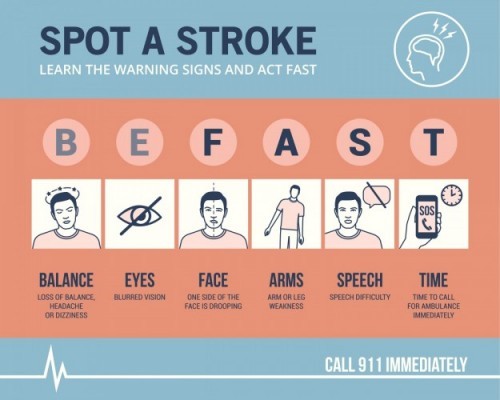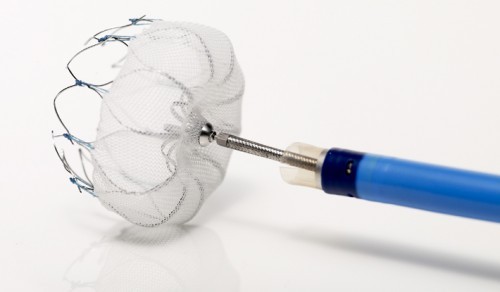
In March 2019, the death of actor Luke Perry at age 52 from an ischemic stroke – caused by a blocked blood vessel to the brain – brought to light the sobering truth that strokes do occur in younger people. According to the Centers for Disease Control and Prevention (CDC), one in seven (14 percent) of patients hospitalized for ischemic stroke every year are younger adults. Age is an important factor for all of us: CDC reports that risk for stroke increases starting at 55, and nearly doubles every decade thereafter.
Lehigh Valley Health Network (LVHN) provides unparalleled stroke diagnosis, treatment, and prevention services. In 2012, Lehigh Valley Hospital (LVH)–Cedar Crest was the first hospital in Pennsylvania to be certified as a Comprehensive Stroke Center, where you receive the highest level of stroke care. LVH–Muhlenberg, LVH–Hazleton, LVH–Schuylkill and LVH–Pocono are all certified Primary Stroke Centers, offering special procedures to rapidly diagnose and treat stroke. Facilities throughout the region utilize LVHN stroke telehealth services, providing immediate video consultation with an LVHN stroke specialist.
Time is brain
The ultimate success of stroke care depends on one factor: time. “People need to recognize symptoms of stroke and call 911,” says neurologist and neurocritical care specialist Christopher Melinosky, MD, with LVPG Neurocritical Care. “When you call an ambulance, it triggers an alert, so that a stroke team is waiting at the hospital when you arrive, ready to provide immediate treatment.”
Melinosky says the mnemonic BE FAST is the most useful way to remember stroke symptoms.
“If you think you’re having a stroke, don’t take an aspirin, which is only recommended when you are having heart attack symptoms,” Melinosky says. “If you are having a hemorrhagic stroke, aspirin may actually worsen bleeding in the brain. The best thing to do is call 911 immediately.”
BE FAST Stroke Symptoms
BALANCE: Is balance or coordination suddenly impaired?
EYES: Is vision suddenly blurred or double?
FACE: Ask the person to smile. Does one side of the face droop?
ARMS: Ask the person to raise both arms. Does one arm drift downward?
SPEECH: Ask the person to repeat a simple phrase. Is speech slurred or strange?
TIME: If you see any of these signs, call 911 right away.
Types of Stroke
Ischemic stroke
Occurs when a vessel carrying blood to the brain is blocked by a clot, causing an interruption in blood flow. Ischemic stroke accounts for about 87 percent of all strokes. The first-line treatment for ischemic stroke is a clot-busting drug called tissue plasminogen activator, or tPA. This medication must be administered within a three-hour window of symptom onset (and up to 4.5 hours in certain patients), the earlier the better. Mechanical thrombectomy, in which doctors manually remove a clot using a catheter and stent system, can be performed up to 24 hours after symptom onset in certain patients, and often offers the greatest chance for recovery.
Hemorrhagic stroke
Caused by bleeding into or around the brain; it accounts for about 15 percent of strokes but about 40 percent of stroke deaths. This type of stroke may be treated with medications that control further bleeding, control high blood pressure and reduce brain swelling. Surgery also can be performed to seal off or repair bleeding vessels in some cases.
Transient ischemic attack (TIA)
Occurs when blood flow to the brain stops for a short time, causing stroke-like symptoms. TIA, sometimes called a “mini-stroke,” is a warning that you are in danger of having a major stroke. This is considered a neurologic emergency, and appropriate workup may actually be able to prevent a stroke.
Reducing Afib-related Stroke with Watchman™
In 2016, an LVHN patient was first in the region to receive a Watchman™ device, which reduces the risk for stroke in patients with difficult-to-treat atrial fibrillation (Afib) who are unable to take blood thinners.
Watchman™ device is an umbrella-like implant that seals off the left atrial appendage (LAA), a section of the heart in which blood can pool and clot. Watchman™ is implanted in the heart using a catheter during an hour-long outpatient procedure. One year after surgery, 95 percent of patients are able to completely discontinue blood-thinning medications.
Pennsylvania's First Mobile Stroke Unit
When it comes to strokes, time is of the essence. That is the idea behind Pennsylvania’s first mobile stroke unit, operated jointly by LVHN and Cetronia Ambulance Corps. The ambulance-like vehicle will bring equipment, stroke treatments and specially educated crew right to the patient, allowing care to begin immediately while transporting them to a stroke-certified facility like LVH–Cedar Crest’s Comprehensive Stroke Center.
What’s on board
- Computed tomography (CT) imaging equipment to help neurologists visualize the type of stroke.
- Video and Telehealth technology to provide secure, real-time consultation with vascular neurologists at the Comprehensive Stroke Center.
- Medications for each type of stroke (clot-busting for ischemic strokes and blood-thickening for hemorrhagic) that can be administered en route.
The mobile stroke unit is stationed at Cetronia Ambulance headquarters in Allentown and can assess contraindications to medications and make treatment determinations normally made only after arrival at a hospital. The crew, both LVHN clinical staff and Cetronia EMTs and Paramedics, could rush such victims to the Comprehensive Stroke Center – where equipment and expertise to perform specialized endovascular procedures, such as catheter-based therapies to capture and remove brain-threatening blood clots, is available 24/7.


